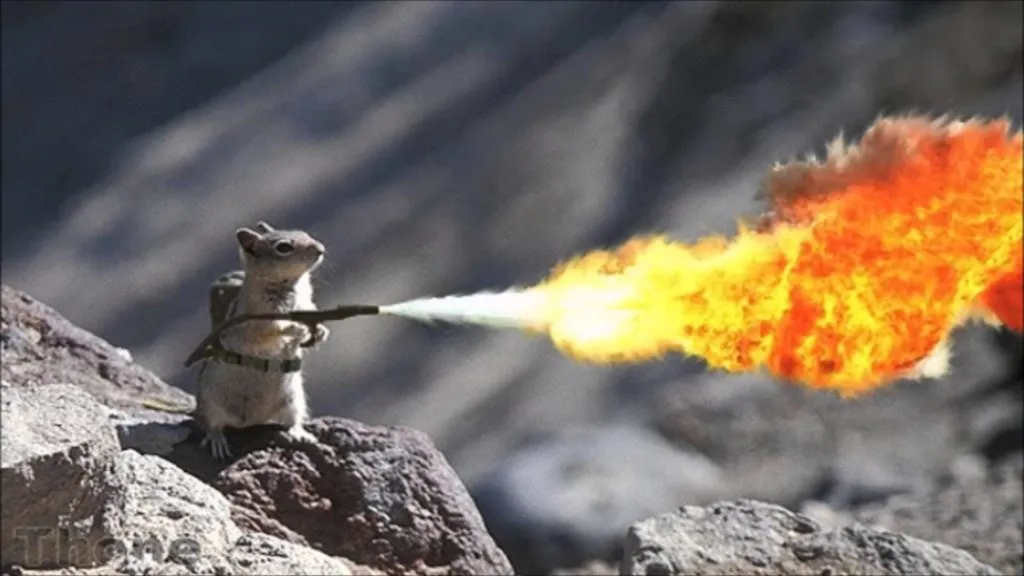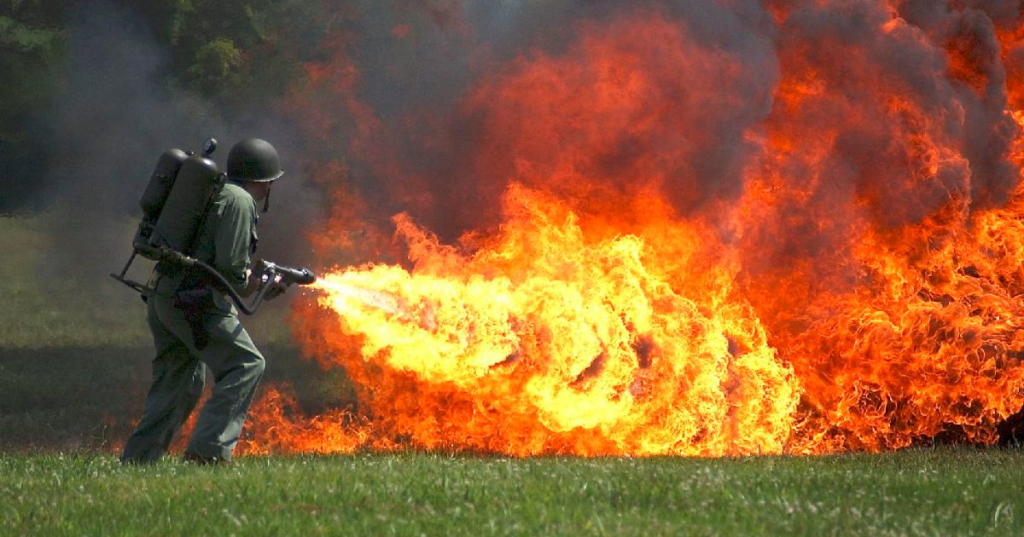Designed to be the ultimate weapon for clearing out enemy trenches, the flamethrower made its first major combat debut in the early days of WWI, unleashing terror upon British and French forces. The flamethrower, however, dates back as far as the 5th century B.C., when elongated tubes were filled with burning coal or sulfur to create a “blowgun” that propelled flames using a warrior’s breath. Considered one of the most devastating weapons on the battlefield, flamethrowers were often considered just as dangerous for the troop wielding it as it was for the enemy facing it.
Here are 5 things you didn’t know about deadly flamethrowers
1. The flamethrower was originally used as an intimidation weapon.
The deadly blaze projected by a flamethrower in WWI was extremely accurate at 20 to 30 feet, and the inferno reached temperatures of around 3,000 degrees. Once the enemy laid eyes on an incoming flamethrower operator, they understood exactly what kind of hell was imminent.
The device was as easy as point and shoot.

2. It proved useful for Marines in Guadalcanal.
Approximately 40 flamethrowers were used by Marine engineers as they rushed into enemy territory. At the time, the flamethrower was used only as a support weapon. This was because the operator needed to be within 20-yards of its target to be effective. It was used to extreme success by Marines on Guadalcanal.
3. It wasn’t designed to kill the enemy.
Contrary to what we’ve seen in the movies, the weapon designed to clear the enemy out hard-to-reach areas, like bunkers, caves, and tunnels. By burning up the oxygen in the area, the flamethrower quickly knocked the enemy out of the fight. It was designed primarily to incapacitate, not kill.
4. From gasoline to gel.
As the technology advanced, militarized flamethrowers went from spraying gasoline to using a flammable gel. The advantage of using gel was that the flame could reach further and would continue to burn the targets to which it stuck.
5. Early flamethrowers operators were considered “walking Zippos.”
The first version the U.S. used were easy targets for small arms fire, as the canisters were filled to the brim with gasoline. One hot bullet could set it ablaze.
Check out the Marines‘ video below to learn more about the history of this fearsome weapon.



